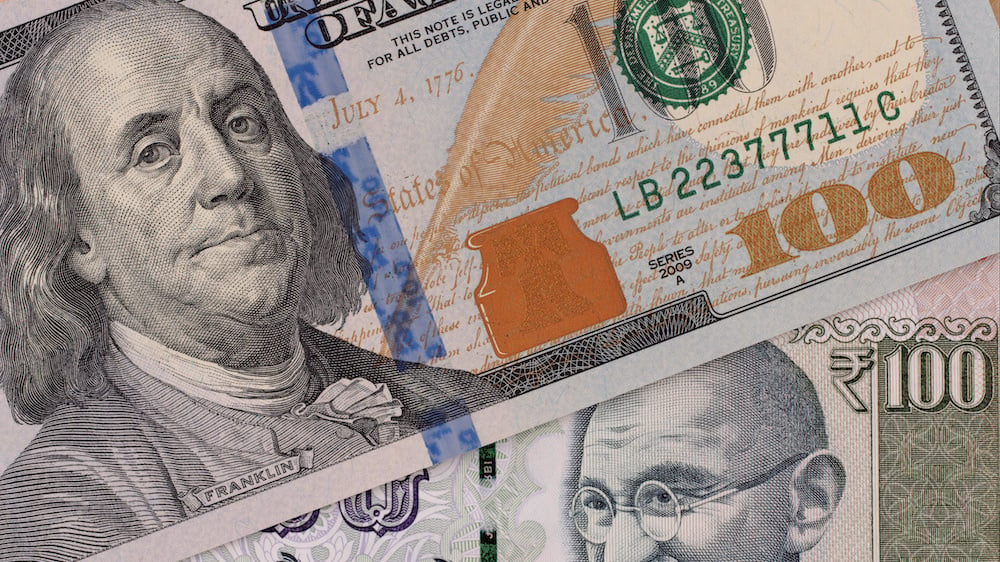INR to USD

The exchange rate between the Indian Rupee (INR) and the United States Dollar (USD) is a critical aspect of the global financial landscape, reflecting the economic health and stability of both nations. This article explores the dynamics of the INR to USD exchange rate, analyzing the factors that influence it, historical trends, and the implications for various stakeholders.
Table of Contents
ToggleFactors Influencing the INR to USD Exchange Rate:
- Economic Indicators: Economic indicators play a pivotal role in determining exchange rates. Key factors include GDP growth, inflation rates, and employment data. A strong and growing economy often leads to a stronger currency.
- Interest Rates: Central banks influence exchange rates by adjusting interest rates. Higher interest rates attract foreign capital, increasing demand for the local currency and strengthening it. The Reserve Bank of India (RBI) and the Federal Reserve in the United States actively manage interest rates to achieve economic objectives.
- Trade Balance: The trade balance between India and the U.S. affects the exchange rate. A trade surplus (exports exceeding imports) can strengthen the INR, while a trade deficit may weaken it. A nation with a surplus tends to have a higher demand for its currency.
- Political Stability: Political stability fosters investor confidence and attracts foreign investment. The INR is likely to appreciate when India demonstrates political stability. Similarly, uncertainty in the U.S. can impact the USD exchange rate.
- Foreign Exchange Reserves: Countries with substantial foreign exchange reserves can stabilize their currencies during times of volatility. Both India and the U.S. closely monitor and manage their foreign exchange reserves to ensure stability.
- Inflation Differentials: Variances in inflation rates between countries affect their exchange rates. Lower inflation in a country relative to its trading partners can lead to an appreciation of its currency.
- Speculation: Currency markets are influenced by speculation. Traders and investors assess various factors and make predictions, impacting short-term fluctuations. Political events, economic data releases, and global events can trigger speculative movements.
Historical Trends:
The history of the INR to USD exchange rate reflects the economic evolution of both countries. Over the years, India has transitioned from a closed economy to a more open and market-oriented one, impacting its exchange rate dynamics.
In the early post-independence period, the INR was pegged to the British Pound. However, in 1966, India adopted a flexible exchange rate system, allowing the INR to be influenced by market forces. Subsequent decades saw various economic reforms, and the INR experienced periods of depreciation and appreciation against the USD.
The 1991 economic reforms marked a significant turning point for India. Liberalization, privatization, and globalization led to increased foreign direct investment (FDI) and a surge in foreign exchange reserves. The INR gradually appreciated against the USD during this period.
In the 21st century, the INR has faced challenges such as the global financial crisis of 2008 and fluctuations in oil prices, given India’s dependence on oil imports. The currency has experienced periods of volatility, reflecting global economic uncertainties.
As of the latest data, the INR to USD exchange rate has shown resilience, with India’s economy demonstrating robust growth. The exchange rate is also influenced by the U.S. economic outlook, interest rate policies, and global geopolitical events.
Implications for Various Stakeholders:
- Exporters and Importers: Fluctuations in the exchange rate impact businesses engaged in international trade. A weaker INR can benefit exporters by making their goods more competitive in international markets. Conversely, importers may face higher costs when the INR strengthens.
- Investors: Investors holding assets denominated in either INR or USD are directly affected by exchange rate movements. Currency risk is a significant consideration for international investors, and they often use hedging strategies to manage exposure.
- Tourism: Exchange rate movements influence the cost of international travel. A stronger INR makes outbound travel more affordable for Indian tourists, while a weaker INR attracts foreign tourists to India.
- Central Banks: The RBI and the Federal Reserve actively monitor and manage exchange rates as part of their monetary policies. Interventions in the foreign exchange market are common tools used to stabilize currency values.
- Government Policies: Governments may implement policies to influence the exchange rate, such as monetary and fiscal measures. These policies aim to maintain economic stability, promote exports, and attract foreign investment.
Conclusion:
The INR to USD exchange rate is a dynamic and multifaceted aspect of the global financial system. It reflects the economic fundamentals, policies, and external factors influencing India and the United States. Understanding the intricacies of this exchange rate is essential for businesses, investors, policymakers, and individuals engaged in international transactions.
As both countries continue to navigate economic challenges and opportunities, the exchange rate will remain a critical indicator of their economic health and resilience in the face of a rapidly changing global landscape. Keeping a close eye on the factors influencing the INR to USD exchange rate allows stakeholders to make informed decisions and adapt to the evolving dynamics of the international financial markets.












Post Comment